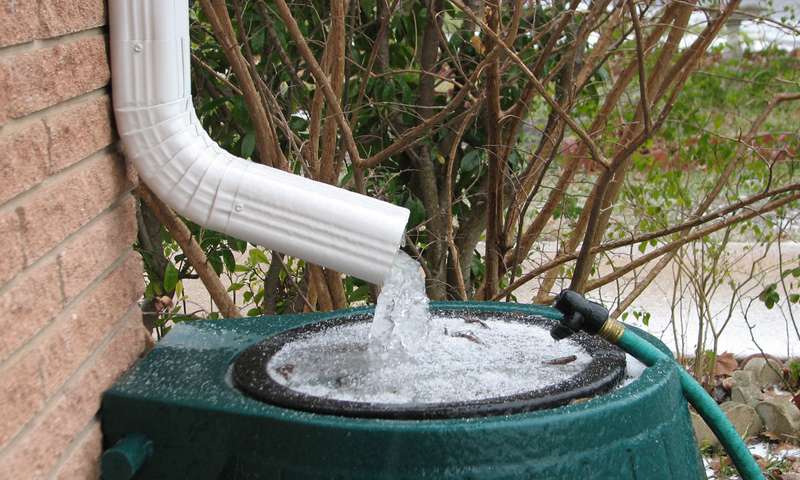Save water at home by harvesting rainwater! Read on to find out how you can start saving today!

Water is the most valuable resource we have on earth. Seventy-one percent of the earth's surface is covered with water. Of the 71 percent, only 3.5 percent is fresh water – 96.5 percent of the total water volume remains salt water. An amazing fact is that not all 3.5 percent of fresh water is safe for human consumption. In fact, only one (0.003 percent) of the 3.5 percent is safe for human consumption or "drinkable". In the United States, many areas are often hit by drought or dry spells with little rainfall. Since uncontaminated water is required for everyday things like preparing and eating food, drinking, washing dishes, maintaining oral and personal hygiene, it is important to save as much fresh, clean water as possible. The simplest method of water protection is nothing new. In fact, it comes from ancient China, and that is harvesting rainwater.
Kick off
The best thing about starting rainwater harvesting is that the upfront costs are minimal. Just buying one or two 30-gallon drums is a great way to start slowly. Then run the rainwater out of a gutter with a downpipe to the drums to collect and store “non-drinkable” rainwater.
Use for non-portable rainwater
Drinking water is water that is produced for human consumption and requires a more complex water purification system to ensure safety. Even if non-drinkable rainwater is not used for human consumption, collecting free water that falls from the sky certainly has many uses, can save a lot of money on your water bill every month, and also save valuable drinking water. Some ways to use non-drinkable water –
- Irrigation of lawns and gardens
- Wash vehicles
- Bathing pets
- Maintaining the water level in wells and fish ponds
- Flush toilets
- to make the laundry
- Exterior cleaning of the building

Store non-drinkable rainwater
One thing to keep in mind is that when you collect rainwater, you can only collect and store as much water as your collection system can hold. If you live in a dry climate or in a drought-stricken area, you may need to consider a larger cistern or a larger collection system so that you can collect and store more rainfall when needed. If you want to start collecting rainwater and are not sure where to start, it is best to contact a professional Sanitary engineer. In this way, you can be sure that the system you receive will meet all of your real estate and water needs.
Conclusion
As with any venture that affects your property, you must always review all local and state regulations and regulations that govern rainwater use. While most states and cities offer incentives and promote practice, others are not as friendly to the concept. It is always best to cover all bases to ensure that you meet all state and local regulations before investing time and money in your harvesting system.
Author bio
Michael Tobias is the founder and director of Chicago engineers. He graduated from the 2004 Georgia Tech class with a Bachelor of Mechanical Engineering with honors. His innovative approach to MEP engineering is based on GE's completion of the Engineering Leadership Program, in which he designed wind turbines and biofuel engines. Michael's passion for design is energy efficiency and environmentally friendly technology.




